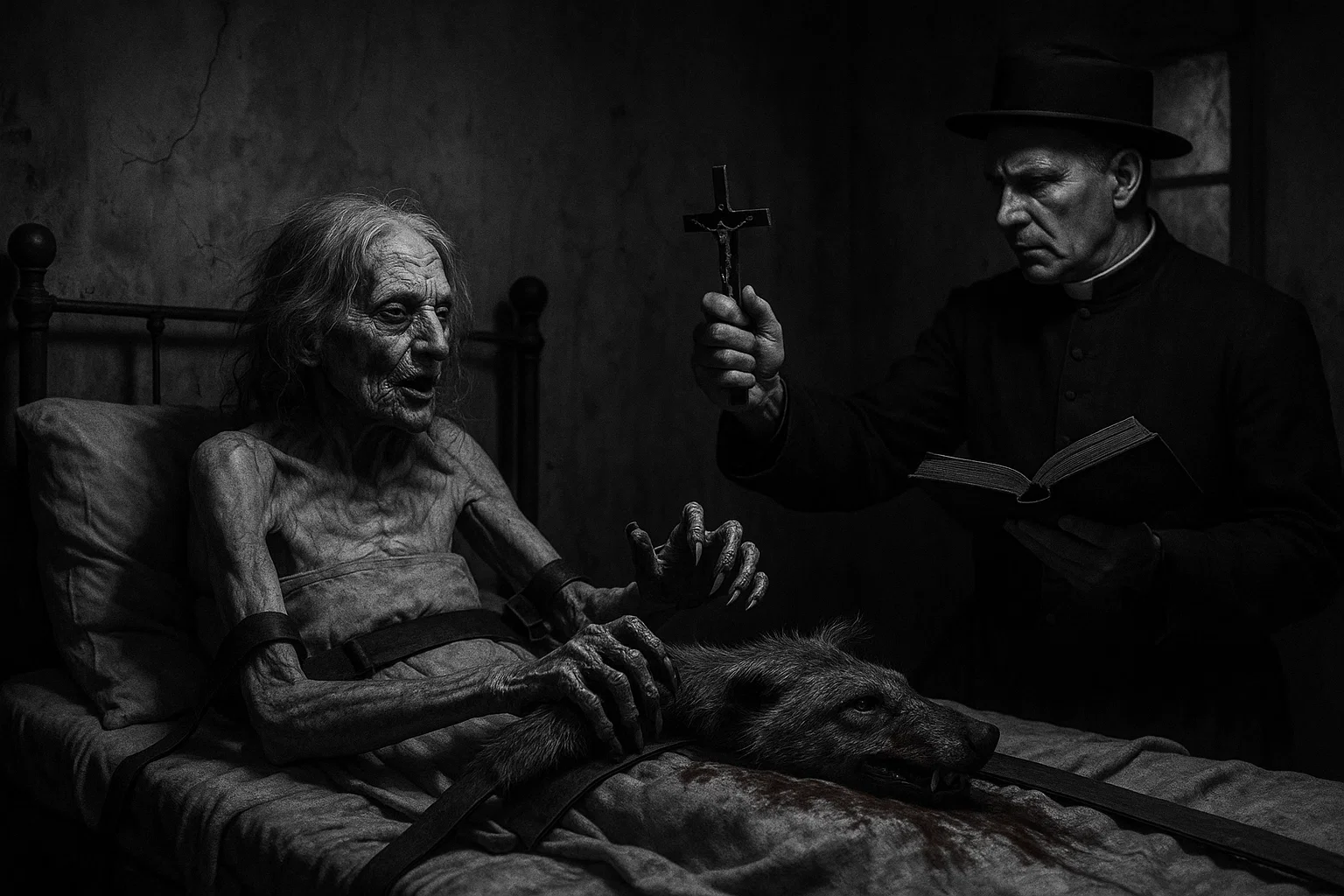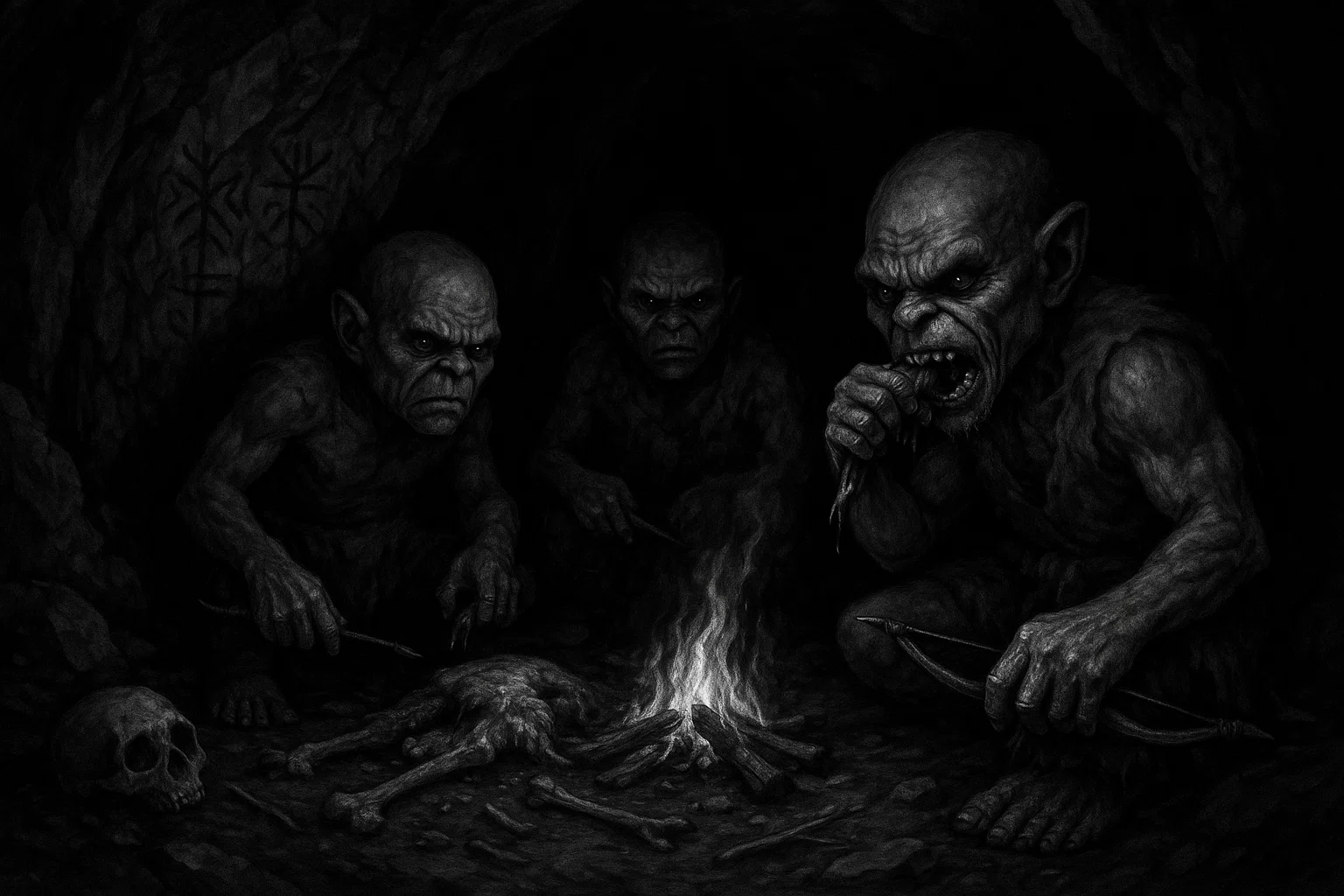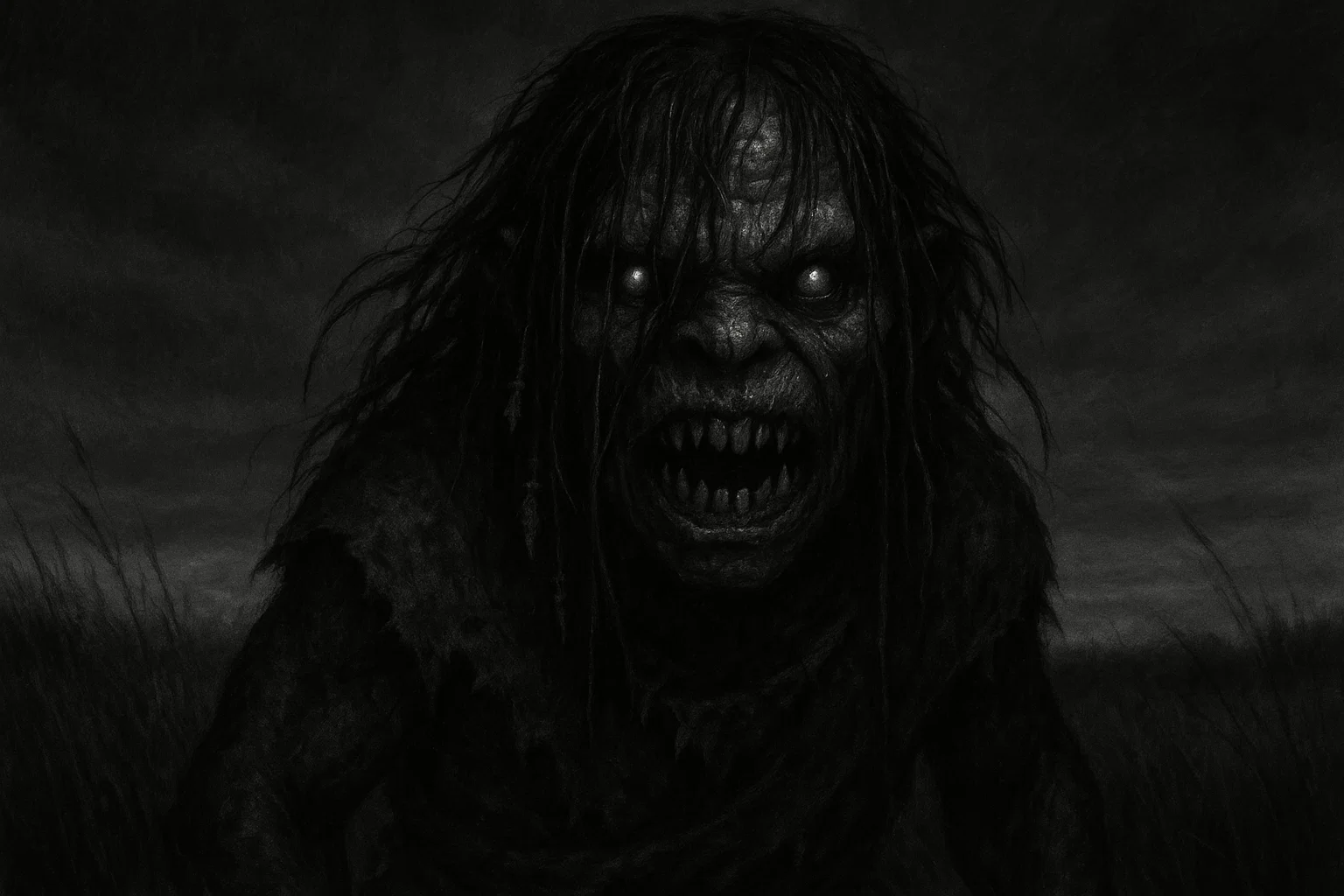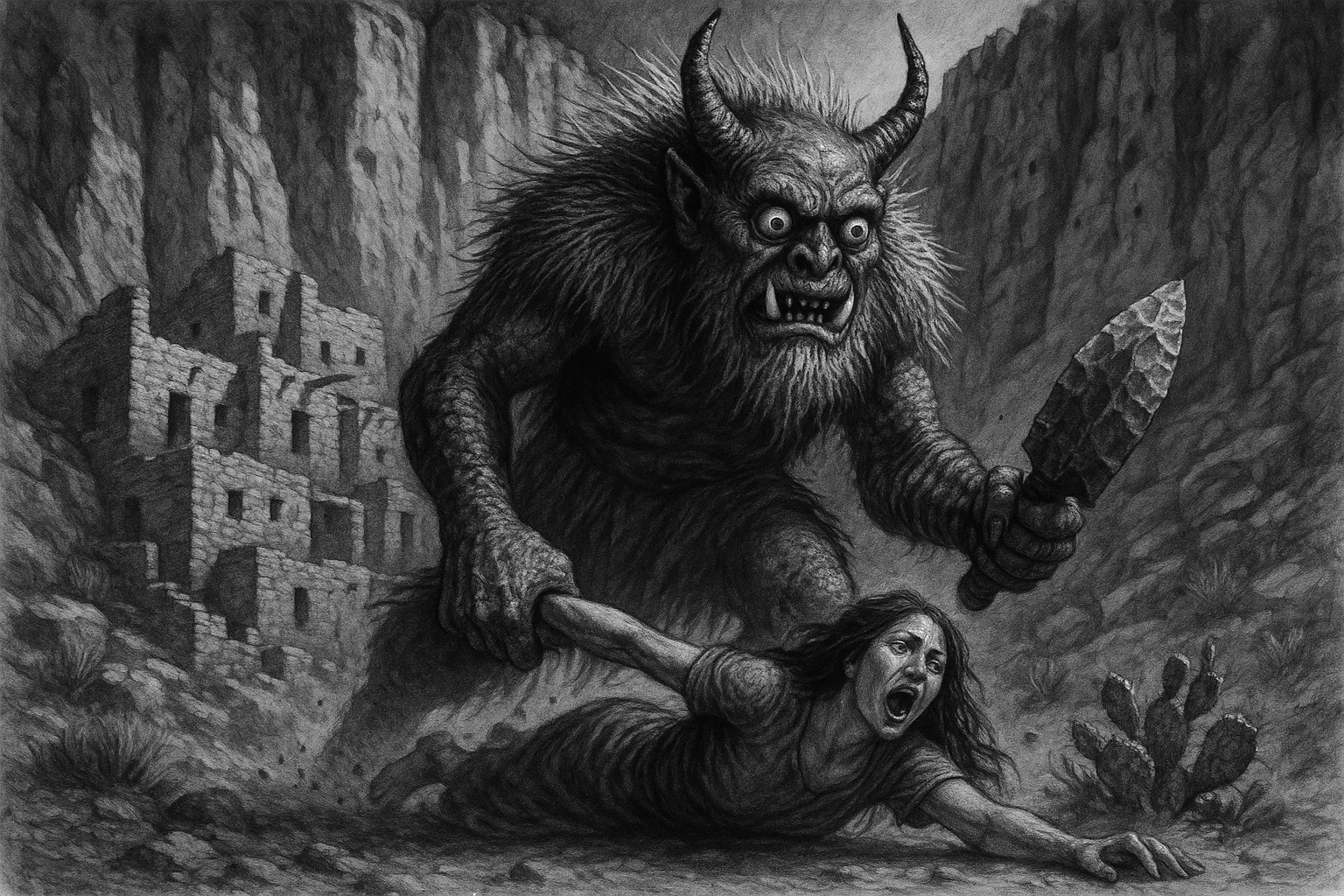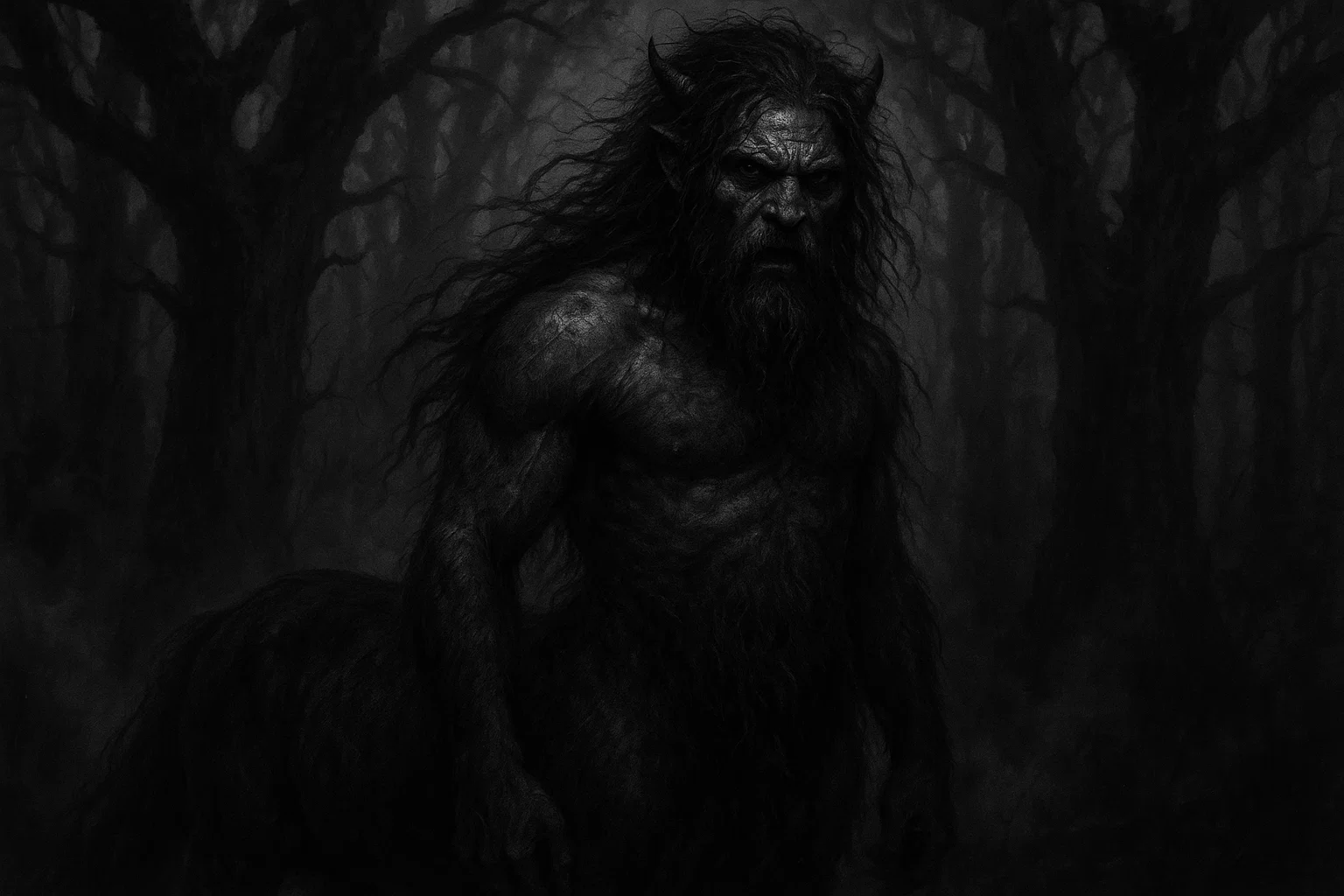The Werewolf of Klein-Krams is a chilling 17th-century folklore tale from the village of Klein-Krams, near Ludwigslust in Mecklenburg, Germany.
This haunting legend centers on the Feeg family, particularly an enigmatic grandmother and her young grandson, who wielded a wolfstrap—a strip of wolfhide imbued with arcane power—to transform into wolves.
The tale unfolds through mysterious wolf attacks disrupting noble hunts, a cavalry officer’s terrifying encounter with a shapeshifting boy, and a forester’s decisive shot with a silver bullet that exposed the grandmother’s monstrous secret.
Rooted in German wilkołak folklore, this mythological nightmare reflects the era’s superstitious dread of lycanthropy and occult practices. Preserved by folklorist Karl Bartsch, it offers a vivid glimpse into the cultural fears that gripped rural Germany, blending ghastly horror with mythic intrigue.
Summary
Overview
| Aspect | Details |
|---|---|
| Case Name | Werewolf of Klein-Krams |
| Location | Klein-Krams, near Ludwigslust, Mecklenburg, Germany |
| Time Period | Mid-17th century (c. 1663–1665) |
| Werewolf Identity | Feeg’s grandmother (primary, unnamed, aged ~60–70); Feeg boy (secondary, ~8–10) |
| Transformation Method | Wolfstrap, a wolfhide strip enabling therianthropic transformation |
| Key Events | – Wolf disrupts hunts, stealing game (spring 1663–summer 1664) – Hussar Heinrich von Brandt witnesses boy’s metamorphosis (autumn 1664) – Forester Matthias Krüger wounds wolf with silver bullet (January 1665) – Grandmother found bleeding, wolfstrap attached, revealing her lycanthropic nature |
| Victims | No confirmed human deaths; ~30–50 livestock (sheep, goats, cattle); stolen game (deer, boars) |
| Modus Operandi | Wolf mauled livestock, stole game from hunters, terrorized village children |
| Discovery | Hussar’s sighting; Krüger’s silver bullet traced to Feeg cottage |
| Key Figures | – Captain Heinrich von Brandt (hussar, witness) – Matthias Krüger (forester, hunter) – Father Lukas (priest, led rituals) – Wilhelm von Hagen (magistrate, organized hunt) |
| Historical Sources | – Karl Bartsch’s 19th-century folklore collections – Mecklenburg oral traditions – Possible 1665 chronicle mention of “cunning wolf” |
| Outcome | Wolf wounded; grandmother exposed, possibly died or exiled; wolfstrap burned |
| Physical Evidence | Wolfstrap, grandmother’s festering wound, blood trail, livestock mangled remains |
Who Was the Werewolf of Klein-Krams?
The Werewolf of Klein-Krams was primarily Feeg’s grandmother, a reclusive woman in her 60s or 70s, whose name is lost to history. Living in a ramshackle cottage on the outskirts of Klein-Krams, she was a gaunt figure with sunken eyes and matted hair, rarely seen outside her home.
Known for her herbal knowledge and solitary habits, she was whispered to possess esoteric secrets, fueling village suspicions of witchcraft. Her possession of a wolfstrap—a tattered strip of wolfhide believed to enable shapeshifting—cemented her as the tale’s central monster.
The wolfstrap, passed down through generations, was a relic of sorcery, tying her to lycanthropic folklore.
The Feeg family included a young grandson, approximately 8–10 years old, described as pale and mischievous, with a haunted gaze that unnerved peers.
He shared the grandmother’s therianthropic ability, using the wolfstrap to transform and chase village children, who fled in abject terror. The family, including an unnamed mother, lived in isolation, their cottage a place of whispered dread.
The grandmother’s enigmatic nature and the boy’s feral antics suggest a hereditary curse, a motif in German folklore where occult powers pass through bloodlines. Their ostracized status made them scapegoats for Klein-Krams’ fears, amplifying the folkloric horror.
You May Also Like: The Adjule: Is the Sahara Hiding a Secret Predator?
Werewolf of Klein-Krams’s Story
In the mid-17th century, Klein-Krams was a rural hamlet nestled amid verdant forests, its game-rich lands drawing nobles for grand hunts.
These events, held annually, were lavish spectacles, with blaring horns, baying hounds, and hunters like Duke Johann Georg of Mecklenburg pursuing deer, boars, and hares.
Around spring 1663, a sinister shadow emerged: a massive wolf, its sable fur shimmering, began disrupting hunts. This uncanny beast evaded bullets, strutting within range as if taunting hunters, only to vanish into the shadowy underbrush.
Its audacious thefts—snatching stag haunches and boar flanks from under hunters’ noses—plunged Klein-Krams into palpable dread.
Crimes and Accusations
The wolf’s heinous acts began with livestock attacks. By summer 1663, farmers reported mangled carcasses: sheep with gouged throats, goats disemboweled, and cattle with shattered ribs.
Shepherd Peter Klein found a flock of 10 sheep slaughtered on 15 April 1663, their viscera strewn like ghastly garlands. Farmer Klaus Schmidt lost 12 goats in May, their abdomens ripped and entrails dangling.
Merchant Johann Weber reported a prized boar butchered on 20 June, its severed head left in Klein-Krams’ square, eyes gouged and tongue lolling in a diabolical mockery. Estimates suggest 30–50 livestock killed, their blood-soaked remains fueling village panic.
The wolf’s savage audacity extended to hunts. On 10 May 1663, hunter Hans Müller watched in stupefied horror as the wolf seized a deer’s bloody haunch, dragging it through the village. Its relentless taunts—parading kills before fleeing—suggested preternatural cunning.
No human deaths are recorded, but the wolf terrorized children, who claimed it stalked them at dusk. Anna, a 9-year-old, described a snarling beast with blazing eyes chasing her near the forest on 5 July 1663, leaving claw marks on a tree.
These terrifying encounters convinced villagers of a wilkołak, a werewolf driven by malevolent sorcery.
The Hussar’s Encounter
The tale’s ghastly climax began in autumn 1664, when Captain Heinrich von Brandt, a hussar from Ludwigslust, rode through Klein-Krams.
On 12 October, seeking shelter, he approached the Feeg cottage, only to witness a frenzied exodus of children, their piercing shrieks echoing. A girl, Anna, stammered that the Feeg boy, left alone, had become a werewolf and would rend them if they stayed.
Intrigued, von Brandt demanded proof, following the children to a loft above the cottage, pulling up the ladder as instructed.
Peering below, von Brandt saw a horrific spectacle: the boy, pale and trembling, began to convulse. His frail limbs twisted, bones snapping with sickening cracks.
Coarse fur sprouted, his face elongated into a snout, and fangs gleamed as his eyes glowed with feral malice. A snarling wolf emerged, its fetid musk filling the air. It lunged at the door, scattering chickens in a cacophony of feathers, and bounded into the moonlit forest.
Von Brandt, clutching his saber, felt primal dread, later recounting the unholy transformation to villagers, igniting a firestorm of fear.
You May Also Like: The Village of Starving Souls | Horror Story
Community Panic and the Hunt
Von Brandt’s tale spread, plunging Klein-Krams into abject terror. Parents barred children indoors, and armed patrols roamed, wielding muskets and blessed silver.
Father Lukas held nightly vigils, ringing bells to banish evil and preaching against demonic pacts. By winter 1664, livestock losses mounted: Weber lost 8 cattle on 10 December, their flanks torn and organs missing. The wolf’s ghoulish antics—leaving a sheep’s severed head at the church door on 15 December—intensified superstitious panic.
Magistrate Wilhelm von Hagen organized a relentless hunt in January 1665, enlisting forester Matthias Krüger, a steely-eyed hunter known for tracking predators.
Krüger inherited a silver bullet, a hallowed relic from his grandfather, believed to slay mythological beasts. On 20 January, during a hunt near Klein-Krams’ forest, Krüger spotted the wolf, its sable pelt glinting.
He fired, striking its flank. The beast’s blood-curdling howl pierced the night, and it fled, leaving a crimson trail.
A Gruesome Discovery
Hunters followed the gore-soaked path to the Feeg cottage, arriving at midnight on 21 January.
Kicking open the door, they found a macabre scene: Feeg’s grandmother lay in bed, writhing in agony, blood oozing from a festering wound in her side.
To their ghastly horror, the wolfstrap—a ragged strip of wolfhide—clung to her waist, and a bristly tail twitched beneath the covers, its unnatural motion chilling onlookers.
Her pallid flesh and sunken eyes betrayed her monstrous secret. The boy, cowering in a corner, admitted to using the strap but pointed to his grandmother as the true scourge, terrorizing hunts for years.
The blood-drenched revelation confirmed the wilkołak fears. The grandmother’s heinous acts—mauling livestock, stealing game, and stalking children—had sown chaos.
Witnesses included:
- Anna: Saw the wolf’s blazing eyes while fleeing.
- Peter Klein: Found mangled sheep, noting claw gashes.
- Hans Müller: Watched the wolf’s taunting theft during a hunt.
- Johann Weber: Discovered a severed boar head in the square.
Werewolf of Klein-Krams’s Trial
As a folkloric tale, the Werewolf of Klein-Krams lacks a formal trial, with justice enacted through ritualistic confrontation.
The silver bullet shot by Matthias Krüger on 20 January 1665 was the pivotal act, wounding the wolf and exposing the grandmother’s lycanthropic nature. The community’s judgment unfolded in the Feeg cottage, where the ghoulish discovery served as an informal tribunal.
Investigation and Interrogation
At midnight on 21 January, Krüger and hunters stormed the cottage, their torches casting eerie shadows. The grandmother’s festering wound—oozing dark blood—matched the silver bullet’s impact, and the wolfstrap’s presence was damning evidence.
Father Lukas, summoned by von Hagen, interrogated the boy, who trembled as he confessed to shapeshifting but insisted his grandmother was the primary monster.
The grandmother, delirious and gaunt, muttered incoherent pleas, her clawed hands clutching the tainted relic. Villagers, gathered outside, cursed her as a sorceress, their shouts echoing through the frosty night.
The wolfstrap was seized, its fetid leather reeking of decay. Krüger tore it from her waist, revealing raw flesh where it had fused to her skin, a gruesome sight that drew gasps.
The bristly tail, still twitching, was hacked off with a hunter’s knife, its gore splattering the floor. The boy’s tearful account—describing the wolfstrap’s use since childhood—painted a harrowing picture of a hereditary curse.
Ritualistic Justice
On 22 January, the wolfstrap was burned in Klein-Krams’ square, a roaring pyre consuming the accursed relic. Father Lukas led a solemn ritual, sprinkling holy water and chanting to cleanse the taint.
The grandmother’s fate is shrouded in ambiguity: some tales claim she died on 23 January, her wound festering with blackened pus, her final screams echoing unholy torment.
Others suggest she was exiled, driven into the forest on 24 January, a pariah marked by village scorn. Her gaunt corpse, if she died, was buried in an unmarked grave beyond the churchyard, a precaution against spectral return.
The boy, ostracized and haunted, likely fled with his mother, their tainted legacy following them. The public burning and ritualistic cleansing served as a proxy execution, satisfying the village’s wrath.
No torture or formal execution occurred, reflecting the folkloric nature over gruesome legalities of cases like Peter Stumpp. The silver bullet and community outrage were the sentence, a mythic triumph over monstrous evil.
You May Also Like: Swiatek: Murder, Cannibalism, and a Wolf’s Curse
Werewolf of Klein-Krams vs. Other Werewolves
The Werewolf of Klein-Krams shares motifs with other lycanthropy tales but stands out for its folkloric artifact and ritualistic justice:
| Case Name | Year | Location | Key Details | Notable Features |
|---|---|---|---|---|
| Peter Stumpp | 1589 | Bedburg, Germany | Confessed to a devil pact, murdered children and livestock; executed by breaking on wheel, beheading, and burning. | Known as the “Werewolf of Bedburg”; claimed to use a magical belt for transformation; gruesome public execution drew massive crowds. |
| Gilles Garnier | 1573 | Dole, France | Hermit who ate children, claimed demonic aid; burned at stake. | Dubbed the “Hermit of Dole”; confessed to killing four children; trial fueled by regional famine and lycanthropy fears. |
| Werewolves of Poligny | 1521 | Poligny, France | Three men accused of eating children; burned at stake. | Involved Pierre Burgot and Michel Verdun; claimed ointment from the devil enabled transformation; early example of group werewolf accusations. |
| Jean Grenier | 1603 | Bordeaux, France | Shepherd boy, attacked children; deemed insane, imprisoned in a monastery. | Youngest known werewolf case at 14; claimed a wolfskin gift from a forest spirit; spared execution due to perceived mental illness. |
| Jacques Roulet | 1598 | Angers, France | Killed a boy, confessed to lycanthropy; deemed insane, sentenced to asylum. | Found covered in blood near a mutilated body; claimed a salve turned him into a wolf; leniency reflected shifting views on mental health. |
| Thiess of Kaltenbrun | 1692 | Livonia, Estonia | Claimed to fight devils as a werewolf; whipped and banished. | Unique “benevolent werewolf” case; insisted he was a “Hound of God”; late example of werewolf trials in Baltic region. |
| Beast of Gévaudan | 1764–67 | Gévaudan, France | Wolf-like creature killed over 100 people; killed by hunters, unresolved. | Mysterious beast sparked national panic; multiple wolves hunted; remains displayed in Versailles, fueling cryptozoological debate. |
| Hans the Werewolf | 1582 | France | Attacked livestock, confessed to transformation; executed. | Lesser-known case; focused on rural livestock losses; confession extracted under torture, typical of the era’s judicial practices. |
| Werewolf of Châlons | 1598 | Châlons, France | Tailor lured and murdered children; burned at stake. | Known as the “Demon Tailor”; gruesome crimes included cannibalism; records destroyed to erase his infamy. |
| Manuel Blanco Romasanta | 1853 | Galicia, Spain | Killed 13, claimed lycanthropy; sentenced to life imprisonment. | Spain’s first serial killer; claimed a curse forced wolf transformations; psychological defense marked a modern approach to werewolf cases. |
The Werewolf of Klein-Krams aligns with Hans the Werewolf in targeting livestock and invoking lycanthropy. The community panic and supernatural explanations mirror Gilles Garnier and Beast of Gévaudan.
Klein-Krams’ folkloric nature, wolfstrap, and no human deaths distinguish it from trial-based cases like Stumpp or Romasanta. The ritualistic burning contrasts with gruesome executions.
Was the Werewolf of Klein-Krams a Real Werewolf?
The Werewolf of Klein-Krams is documented primarily through Karl Bartsch’s 19th-century folklore collections, which preserve Mecklenburg’s oral traditions.
Bartsch, a German folklorist, recorded the tale as a mythological narrative, likely rooted in 17th-century stories passed down by villagers. A possible mention in a 1665 Mecklenburg chronicle, describing a “wolf of unnatural cunning” near Ludwigslust, offers tentative corroboration, but lacks specifics about the Feeg family or wolfstrap.
No court records, parish registers, or legal documents exist, confirming the tale’s folkloric rather than historical nature.
The story reflects 17th-century Germany’s cultural anxieties. Lycanthropy beliefs were rampant, with witch-hunts claiming ~100,000 lives from the 14th to 17th centuries.
The wolfstrap motif, seen in tales like the Saga of the Volsungs, symbolizes occult transformation. The silver bullet, a folklore staple, appears in later werewolf legends, reinforcing the mythic framework. The grandmother’s role mirrors accusations against women as witches, often scapegoated for inexplicable events.
A 1599 text, Discourse on Lycanthropy by Jean Beauvoys de Chauvincourt, argues lycanthropy was a diabolical illusion or mental affliction, shaping contemporary views.
Modern analysis suggests the tale may exaggerate real wolf attacks, common in Mecklenburg’s forests, or reflect social tensions. The Feeg family’s isolation could indicate community scapegoating, akin to witch accusations.
Clinical lycanthropy, a psychiatric disorder, is unlikely, given the magical relic and multiple shapeshifters. The blood trail and wound are narrative embellishments, enhancing horror.
While the events are not verifiable, the tale captures the primal dread of a region steeped in superstition, making it a cultural artifact of enduring fascination.
You May Also Like: Children Vanished: The Werewolf of Eschenbach Case
Conclusion
The Werewolf of Klein-Krams is a mesmerizing legend of shapeshifting terror, blending mythic intrigue with communal fear.
The Feeg family’s wolfstrap and lycanthropic deeds captivated Klein-Krams, leaving a haunting legacy. Preserved through oral tradition, this folkloric tale reflects 17th-century Germany’s superstitious psyche.
No real werewolf stalked Klein-Krams, but the story’s vivid horror and cultural resonance ensure its place in lycanthropy lore. It underscores humanity’s eternal quest to confront the unknown through myth and magic, cementing the Werewolf of Klein-Krams as a timeless nightmare.

